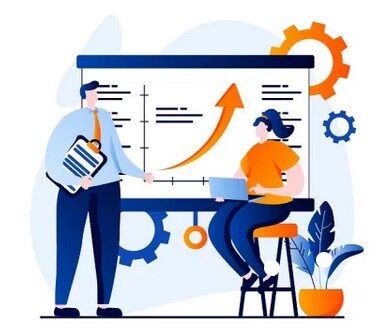In purchase accounting, valuation analysis begins with identifying intangible assets to be recognized apart from goodwill. The criteria for identifying these intangibles is set out in the FASB Accounting Standard Codification Topic 805, Purchase Accounting. The determinations are not always intuitive management’s guidance is critical, especially at the early stages of a project.
Our definition of “intangible” is often based on its formal definition:
In contrast with the linguistic definition of intangible, US GAAP/IFRS definitions need intangible assets to show concrete tangible properties.
Formal Regulatory Guidance
According to ASC 805-20-25-1, an intangible asset is identifiable if it:
♦ arises from contractual or other legal rights, regardless of whether those rights are transferable, and, if they are transferable, regardless of whether the acquirer intends to transfer them, and/or
♦ is separable. This means that the asset can be transferred, licensed, or rented individually or in combination with a related contract, asset, or liability, regardless of whether the acquirer intends to transfer, license, or rent it.
ASC 805-20-55-13 describes the following categories of intangible assets: technology, customers, marketing, contracts, and artistic creations.
Interpretation
While a linguist does not expect to be able to see or touch anything intangible, accountants do.
Let’s consider computer code, a copyright asset which is often classified as either developed technology or in-process R&D. Unlike, say “talent,” one can see the code. We can measure it by lines of code, cost to produce, or functionality. In fact, the code is so tangible that changing one character can disable it completely. One might even say you can touch the code, except we don’t touch two-dimensional things, our computers do.
The existence of an intangible property, as defined by the linguist, is often an opinion, e.g. “mindfulness.” The existence of a patent or a contract is a fact. We can see patents, contracts, or customer lists, which we can associate with physical objects such as a stack of papers. Important patent portfolios are often subject to careful, and expensive due diligence; so are contracts.
Customer relationships result in some of the most detailed analyses. Tangible evidence such as the number of customers, customer concentration, revenue, profitability, attrition, and contractual terms are considered. In fact, future cash flows generated from a group of customers can be more certain than cash flows generated from a PP&E asset.
Practical Considerations
Under US GAAP/IFRS, intangible assets are very tangible and well-defined assets. In order to be identifiable and separable, intangible assets must have some of the following characteristics:
♦ Ability to generate new or enhance existing cash flows, e.g. a library of articles that sell more ads online,
♦ Possess legal or contractual right, e.g. proprietary computer code or purely open-source (however open-source may have a complex set of legal entanglements associated with it),
♦ Ability to be placed in a separate legal entity, e.g. a list of customers without contracts can be moved to a separate legal entity, a frequent occurrence amount multinationals.
Corporate culture or team’s core competencies, ability to create or sell new products or synergies are all part of goodwill. Curiously, the workforce is not recognized apart from goodwill but nevertheless requires valuation as an input in valuing other intangible assets.
Developed Technology vs. In-Process R&D
Because accounting for developed technology and in-process R&D (IPR&D) is different, the distinction is important. Developed technology is amortized over its useful life while, when acquired as part of a business combination, IPR&D is subject to impairment testing until completed or abandoned. Once completed, amortization of IPR&D begins.
IPR&D represents development that carries substantial technological risks. Pharmaceutical products have to clear FDA to move past IPR&D accounting. In certain transactions (asset acquisitions), acquirers may be able to expense IPR&D and avoid periodic impairment testing.
IPR&D determinations for software companies can be more nuanced as much development is ongoing with multiple smaller milestones, especially within SaaS companies. The stages of project lifecycle may include conceptualization, applied research, development, and pre-production. An analyst has to determine that the project has substance as well as it is still incomplete with unresolved technological risks.
IPR&D assets are rarely recognized in software company acquisitions. In our analysis of 2016 acquisitions by publicly traded companies, only 5 of 71 reported IPR&D with median 10% purchase price (or net assets acquired) allocated to the asset.
Special Considerations for Private Companies
The Private Company Council (PCC) voted and FASB endorsed an option for private companies to ignore non-compete agreements and certain (commonly non-contractual) customer relationships in purchase accounting. The rules went into effect at the end of 2015. Accounting professionals advise caution in adopting these PCC alternatives, especially when the company may eventually go public or seek an acquirer. Read more ….
Examples of Intangible Assets by Industry
| Information Technology | Life Sciences | Financial Institutions |
| Developed technology In-process R&D Customer relationships Trade names Backlog Content Non-compete agreements |
Patents and product rights In-process R&D Platform technology Supplier contracts Trade names Non-compete agreements |
Core deposit intangibles Distribution channels Brands Licenses Fund manager contracts Servicing rights |
Schedule a free consultation with us to discuss your ASC 805 valuation by CLICKING HERE.



